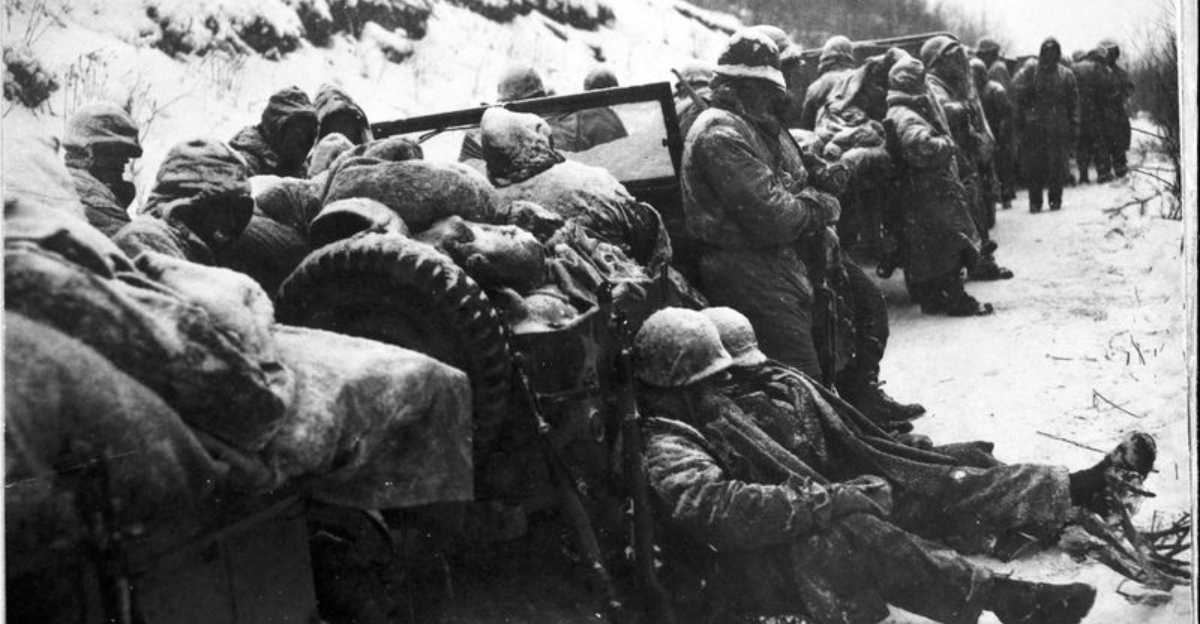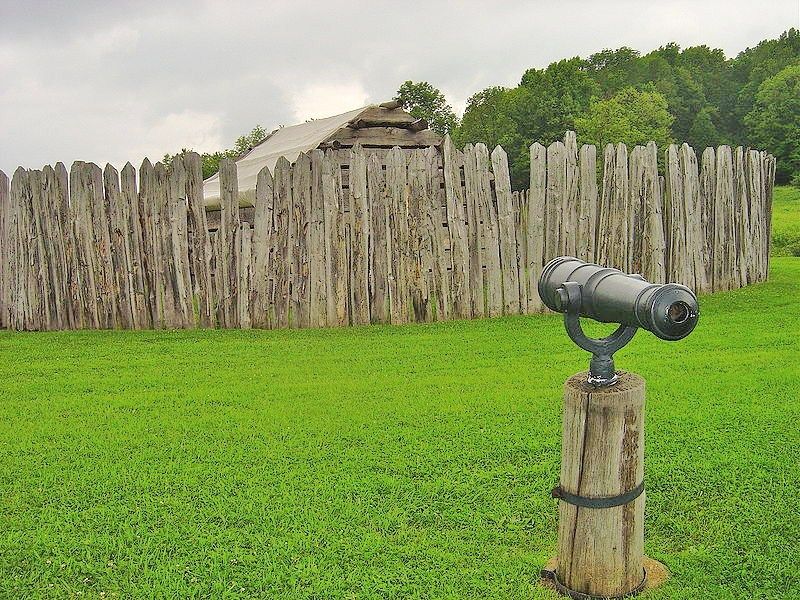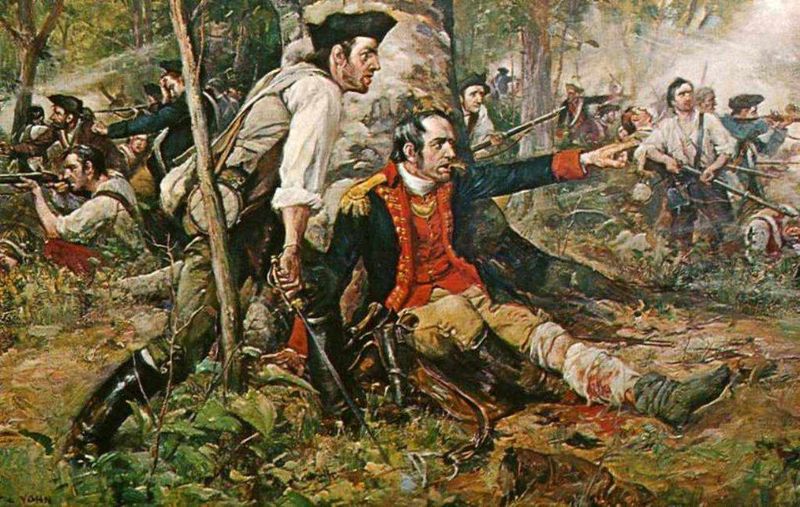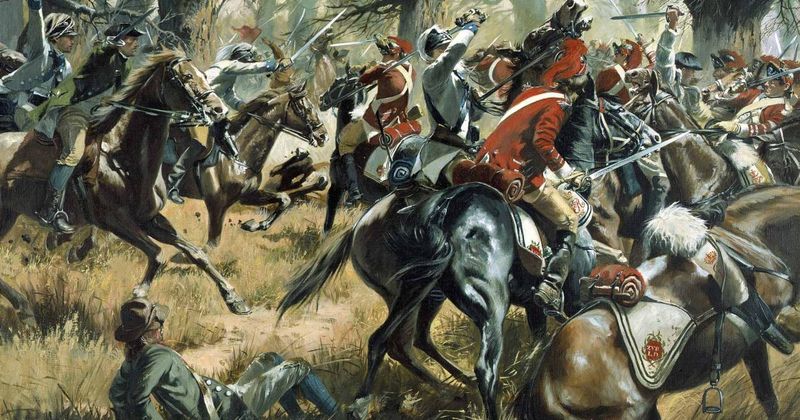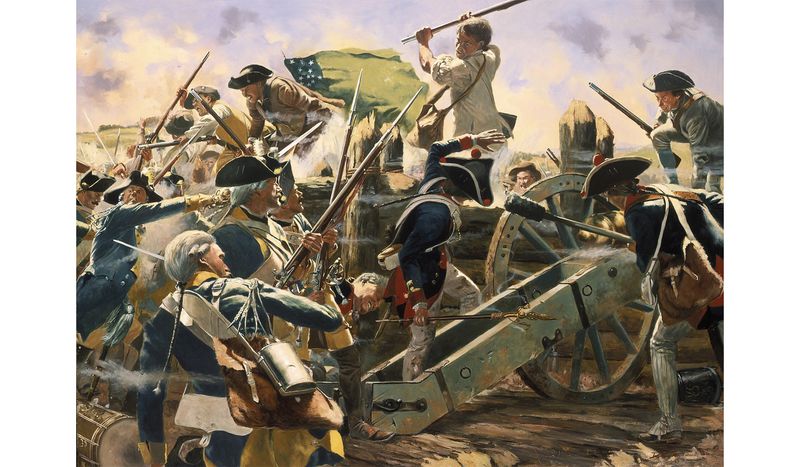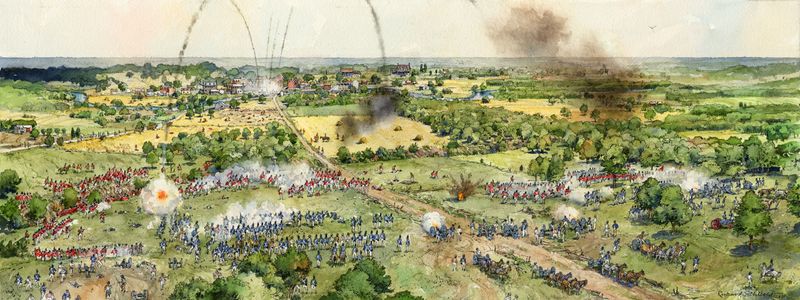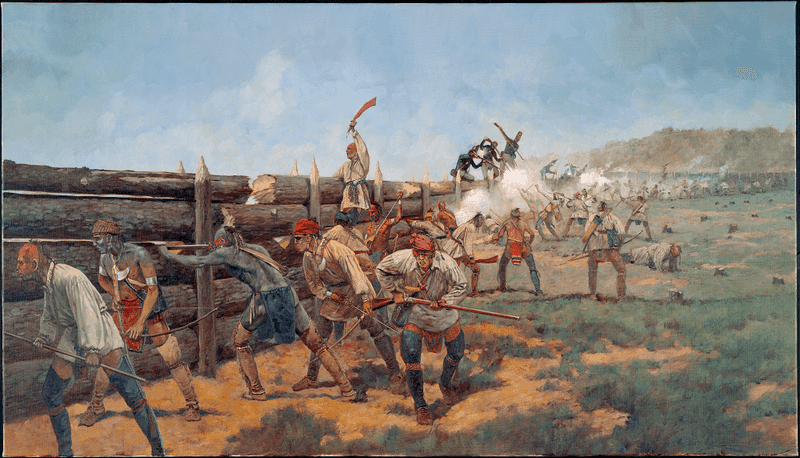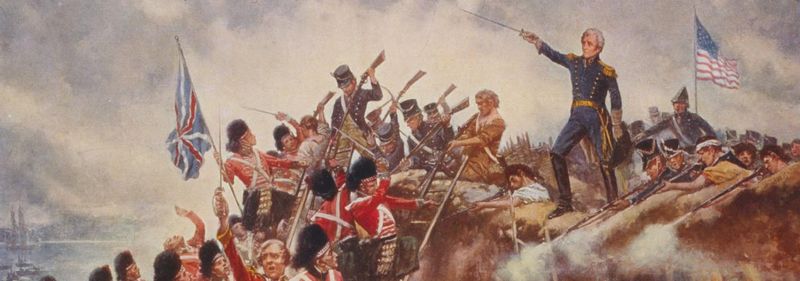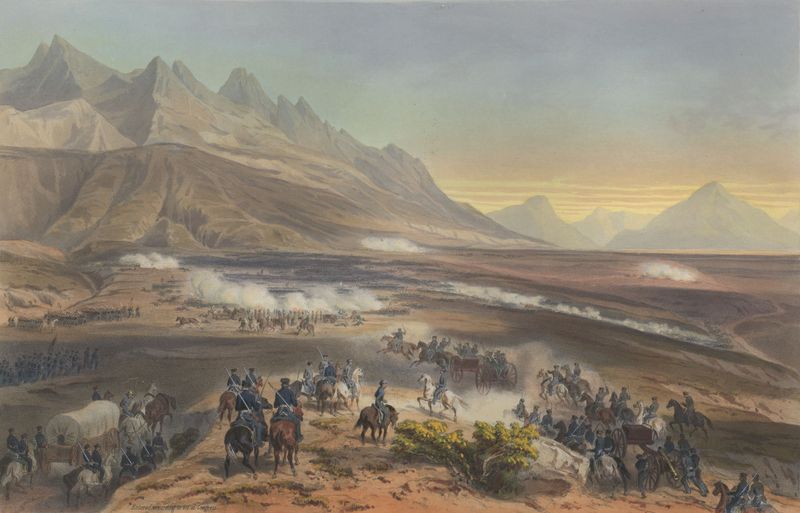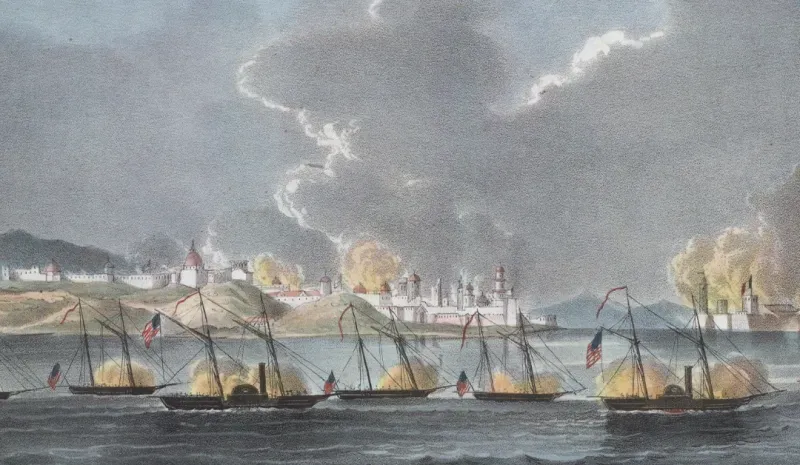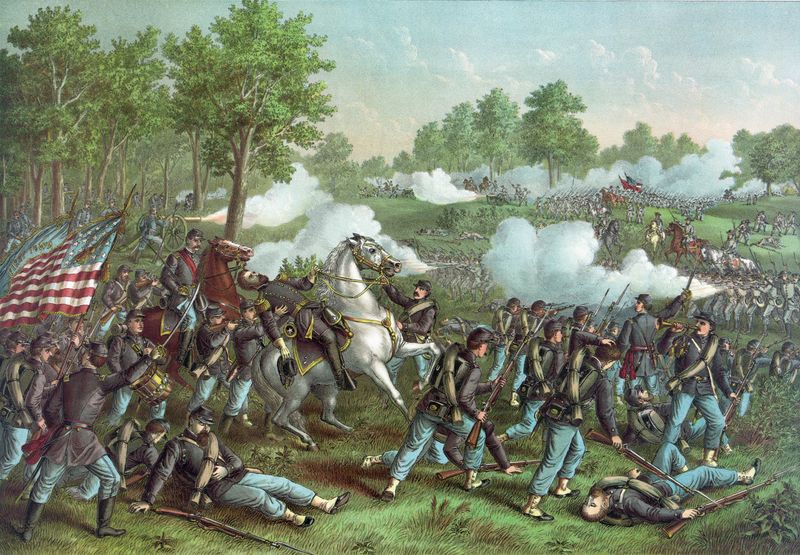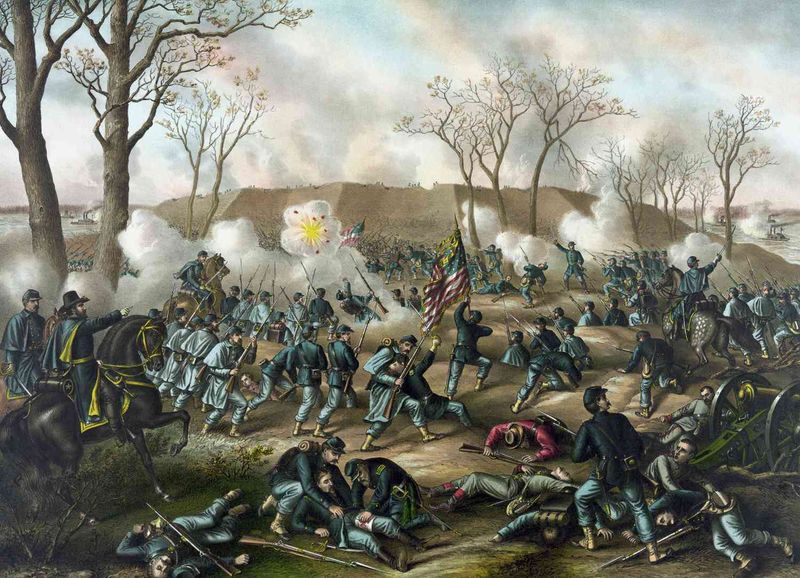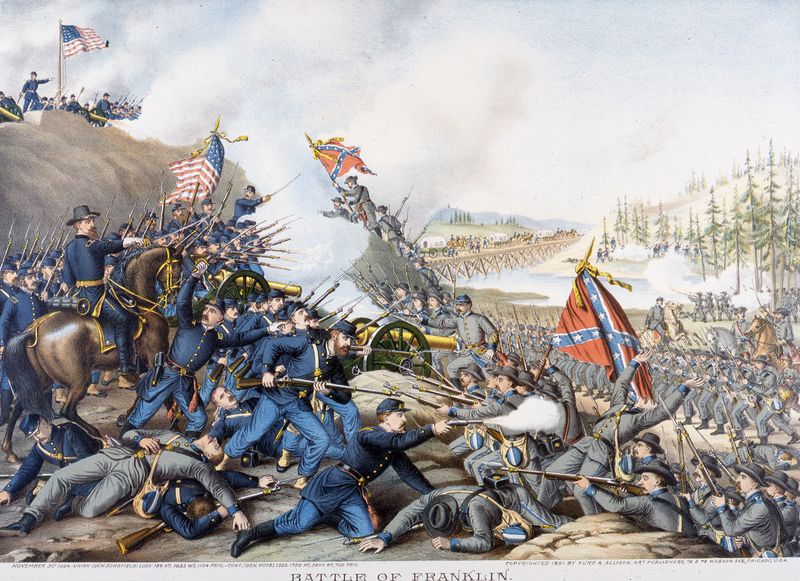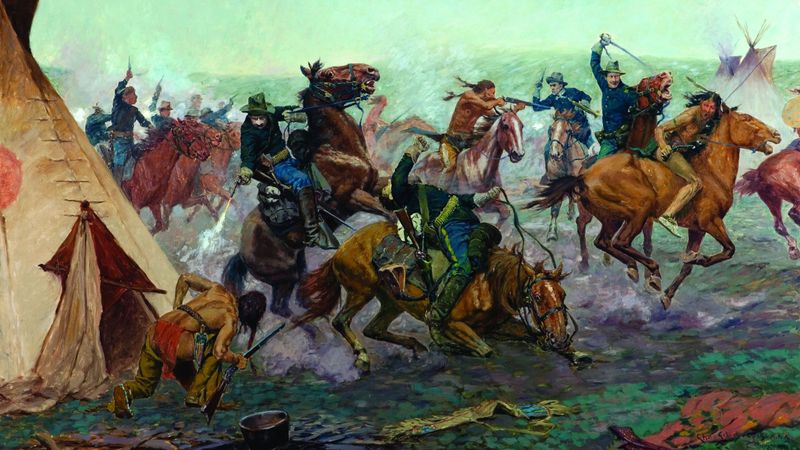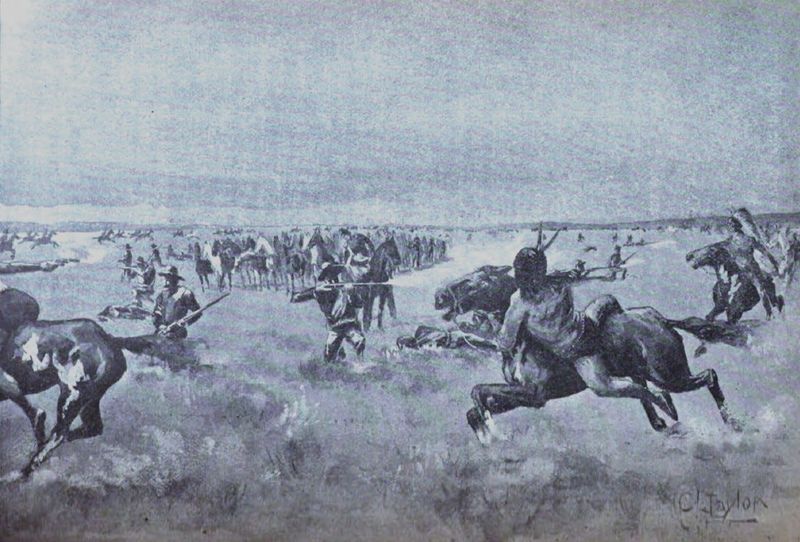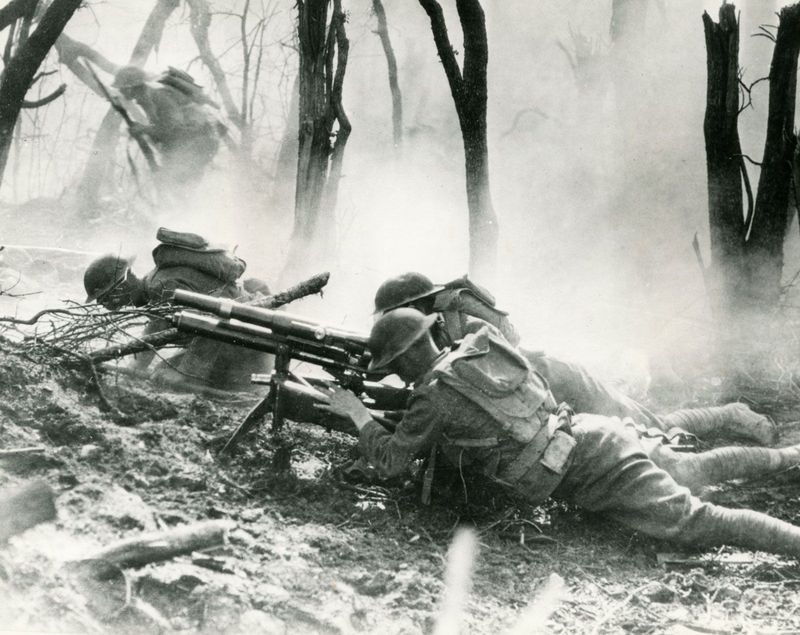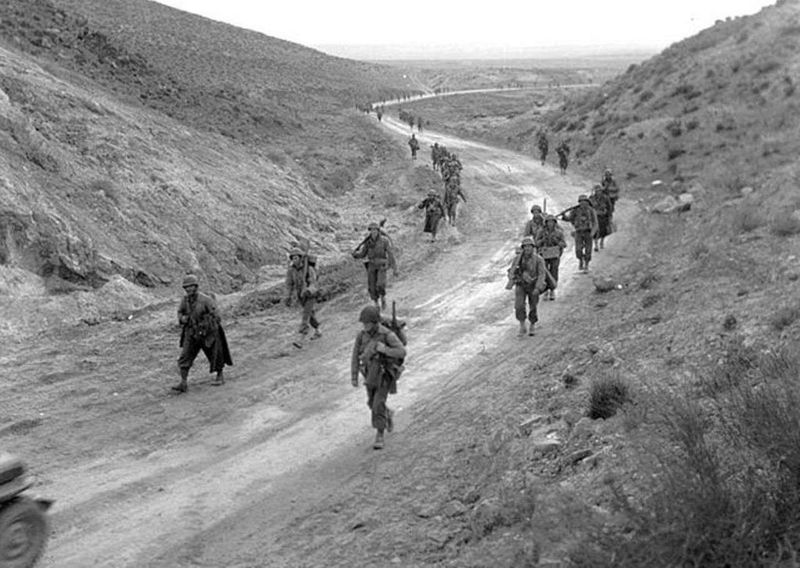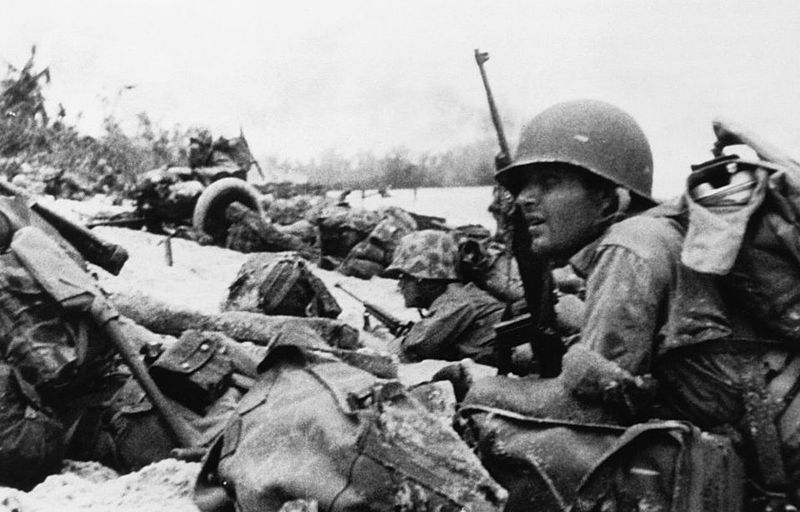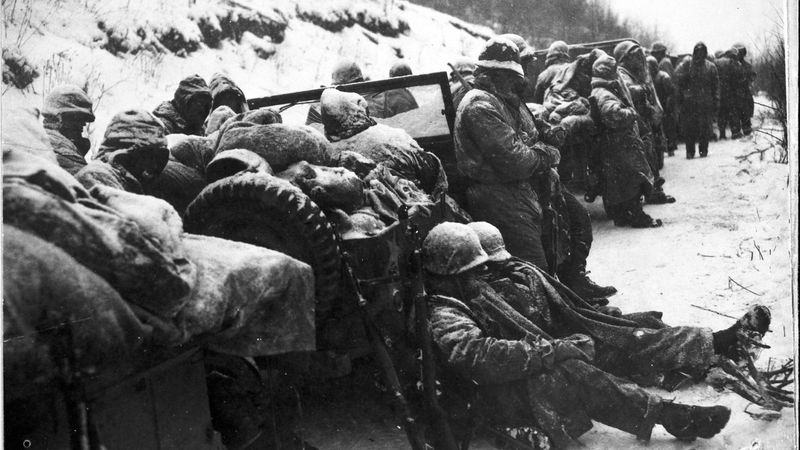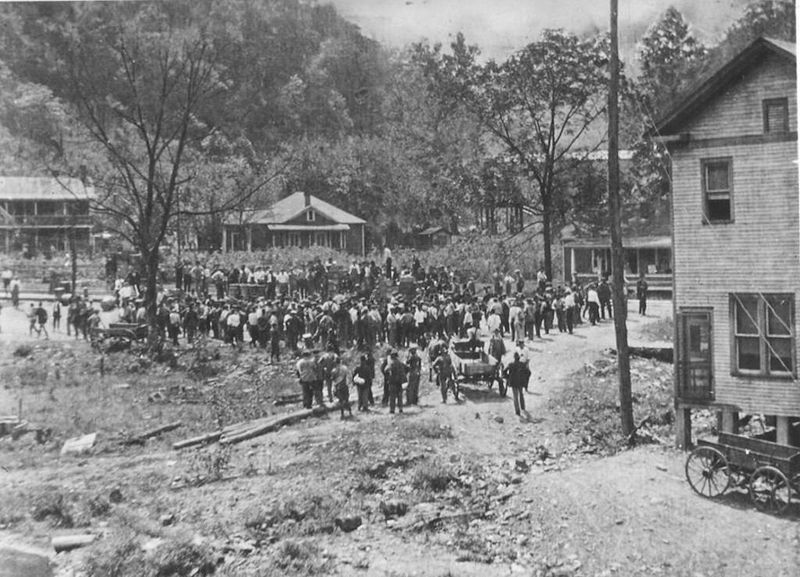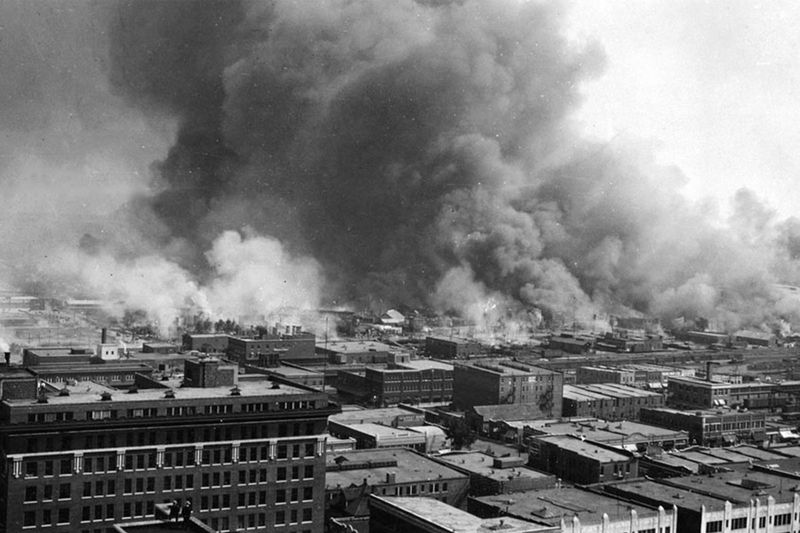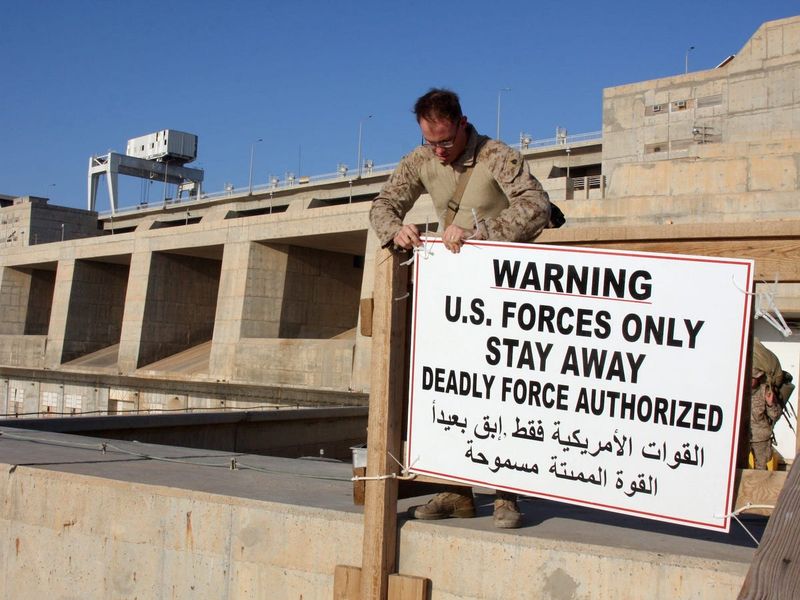American history is rich with battles that have shaped the nation’s trajectory, yet many remain overshadowed by more famous conflicts. These lesser-known battles, from the Colonial era to modern times, have significantly impacted the course of events, influencing military strategies, political outcomes, and societal changes. This article explores 24 such battles, detailing their significance and the unique stories behind them.
1. Battle of Fort Necessity
In the dense forests of Pennsylvania, a young and inexperienced George Washington found himself leading a hastily constructed fortification known as Fort Necessity. It was July 3, 1754, and the French were advancing. Washington’s first military engagement was not a triumphant one; the fort fell after a brief skirmish. The loss, however, marked the beginning of the French and Indian War, setting the stage for Washington’s future leadership.
While a defeat, it was a critical learning experience for Washington, shaping his strategies in later battles. This encounter underscored the complexities of frontier warfare and colonial ambitions.
2. Battle of Oriskany
On August 6, 1777, the dense woods of Oriskany, New York, became the site of one of the Revolution’s bloodiest confrontations. American militia, under General Nicholas Herkimer, were ambushed by Loyalists and Native American allies. Despite being severely wounded, Herkimer inspired his men to hold their ground.
The battle disrupted British plans during the Saratoga campaign, proving pivotal in their eventual defeat. It highlighted the brutal nature of frontier warfare, emphasizing the harsh realities faced by those seeking independence. This lesser-known conflict showed the high cost of loyalty and defiance against colonial powers.
3. Battle of Cowpens
The morning of January 17, 1781, in South Carolina saw a masterclass in tactical warfare. General Daniel Morgan’s forces faced the British under Colonel Banastre Tarleton. Employing brilliant tactics, Morgan’s troops staged a feigned retreat, luring the British into a trap.
This clever maneuver led to a decisive American victory, contributing significantly to the Southern campaign. The battle’s success directly influenced Lord Cornwallis’s decision to retreat to Yorktown, setting the stage for the war’s conclusion. Cowpens demonstrated the efficacy of cunning over sheer force, altering the dynamics of the Revolutionary War.
4. Battle of Bennington
August 16, 1777, marked a significant turning point in the Northern theater of the American Revolution. The Battle of Bennington saw American forces led by General John Stark decisively defeat a detachment of British and Hessian troops. The victory severed British supply lines, boosting Patriot morale and contributing to the larger Saratoga campaign.
The battle’s significance lay not only in its tactical success but in its psychological impact on both sides. Stark’s leadership and the militia’s resilience showcased the determination of colonial forces. This lesser-known victory played a crucial role in the eventual American triumph at Saratoga.
5. Battle of Bladensburg
In the heat of August 24, 1814, the Battle of Bladensburg unfolded in Maryland, just outside the capital. American forces, poorly organized and led, faced a seasoned British army. The result was a swift and disastrous defeat for the Americans, leading to the infamous burning of Washington, D.C.
This humiliation underscored the vulnerabilities in American defense and galvanized efforts to strengthen the nation’s military capabilities. Despite its embarrassment, the battle highlighted the need for unity and resilience in defending national sovereignty against foreign threats.
6. Battle of Horseshoe Bend
On March 27, 1814, a rugged bend in the Tallapoosa River became the scene of a decisive conflict. General Andrew Jackson led American troops and allied Native Americans against the Creek Nation in what was to become their last stand. The Battle of Horseshoe Bend was brutal, resulting in a decisive victory for Jackson.
This triumph not only ended the Creek War but also secured immense territory for the United States. It solidified Jackson’s reputation as a formidable leader, setting the stage for his future national prominence. The battle reshaped southeastern U.S. territories and native relations.
7. Battle of New Orleans
January 8, 1815, became an iconic date in American military history with the Battle of New Orleans. General Andrew Jackson’s forces, a motley crew of soldiers, pirates, and militia, faced the British army in a swampy terrain. Despite the peace treaty signed weeks earlier, the battle saw Americans claim a resounding victory.
This triumph catapulted Jackson to national fame and instilled a newfound sense of pride and identity in the young nation. The victory underscored the importance of strategic positioning and the element of surprise in warfare.
8. Battle of Buena Vista
Under the sweltering sun of February 22-23, 1847, the arid landscapes of Buena Vista witnessed a pivotal confrontation in the Mexican-American War. General Zachary Taylor’s smaller, yet disciplined American forces faced a larger Mexican army under General Santa Anna.
Utilizing the rugged terrain and clever tactics, Taylor managed to secure a narrow victory. This battle not only showcased his leadership but also affirmed U.S. military prowess in the conflict. Buena Vista was instrumental in shaping Taylor’s future political career, eventually leading him to the presidency. The engagement highlighted the strategic importance of terrain in battle outcomes.
9. Siege of Veracruz
In March 1847, the coastal city of Veracruz became the stage for America’s first major amphibious operation. General Winfield Scott led U.S. forces in a meticulously planned landing, setting a precedent for future military operations. Overcoming harsh conditions and determined Mexican defenders, the siege lasted 20 days.
The successful capture of Veracruz opened the path to Mexico City, marking a turning point in the Mexican-American War. This operation demonstrated the evolving nature of warfare and the importance of coordination between naval and ground forces. The siege remains a model for modern military strategy, showcasing early innovation in amphibious warfare.
10. Battle of Wilson’s Creek
The rolling hills of Missouri set the scene for the Battle of Wilson’s Creek on August 10, 1861. It marked one of the early confrontations in the Civil War, with Union forces under General Nathaniel Lyon clashing against a larger Confederate army. Despite Lyon’s death and Union retreat, the battle secured Confederate influence in Missouri.
The engagement highlighted the divided loyalties within border states and foreshadowed the prolonged nature of the war. Wilson’s Creek underscored the complexities of leadership and morale in early Civil War battles, shaping strategies in the Western theater.
11. Battle of Glorieta Pass
Often referred to as the “Gettysburg of the West,” the Battle of Glorieta Pass unfolded in the rugged landscapes of New Mexico from March 26-28, 1862. Union forces faced Confederates aiming to secure the Southwest. The battle ended with Union forces destroying Confederate supply lines, halting their advance.
This engagement was pivotal in preventing Southern expansion westward, preserving Union presence in the region. It underscored the strategic significance of logistical support in warfare. Glorieta Pass remains a testament to the diverse theaters of the Civil War and the critical role of terrain in tactical decisions.
12. Battle of Fort Donelson
February 1862 saw a turning point in the Civil War with the Battle of Fort Donelson. Union General Ulysses S. Grant led a determined assault against the Confederate stronghold in Tennessee. After fierce fighting, Grant demanded unconditional surrender, securing a crucial victory.
The fall of Fort Donelson opened the Southern interior to Union advances, boosting Northern morale. It marked the rise of Grant as a key Union leader, known for his tenacity and strategic insight. This victory paved the way for future successes in the Western theater, emphasizing the importance of aggression and bold leadership.
13. Battle of Franklin
On November 30, 1864, the small town of Franklin, Tennessee, witnessed one of the Civil War’s fiercest battles. Confederate General John Bell Hood launched a massive frontal assault against fortified Union positions. The attack resulted in devastating Confederate casualties, crippling the Army of Tennessee.
The Battle of Franklin marked the end of Confederate offensive operations in the Western theater, underscoring the futility of head-on assaults against entrenched positions. This engagement highlighted the human cost of war and the strategic missteps that plagued Confederate efforts. Franklin remains a poignant reminder of the Civil War’s destructive nature.
14. Battle of the Rosebud
The windswept plains of Montana became the backdrop for the Battle of the Rosebud on June 17, 1876. U.S. forces, led by General George Crook, faced a coalition of Native American tribes. The fierce engagement ended inconclusively, but it weakened Crook’s ability to support General Custer at Little Bighorn.
This battle highlighted the Native American resistance and their strategic prowess. It emphasized the challenges faced by U.S. forces in subduing indigenous tribes. The Rosebud was a critical prelude to the infamous Custer’s Last Stand, demonstrating the interconnected nature of these frontier conflicts.
15. Battle of Washita River
November 27, 1868, marked a controversial chapter in Native American conflicts with the Battle of Washita River. Led by Lieutenant Colonel George Custer, U.S. cavalry launched a surprise attack on a Cheyenne village in present-day Oklahoma. The attack resulted in significant casualties among the Cheyenne.
Custer’s actions at Washita foreshadowed the brutal tactics seen in later conflicts. The battle underscored the harsh realities of U.S. policies towards Native Americans and the ongoing struggle for control of the Western frontier. Washita remains a symbol of the complex and often tragic interactions between settlers and indigenous peoples.
16. Battle of Bear Valley
Amidst the backdrop of World War I, the desert expanses of Arizona saw the last documented battle with Native Americans on January 9, 1918. The Battle of Bear Valley involved U.S. cavalry clashing with Yaqui warriors resisting relocation.
The engagement was brief but marked the end of an era in Native American military history. It highlighted the continued struggles of indigenous peoples for rights and autonomy during a time of global conflict. Bear Valley serves as a poignant reminder of the complex relationships between Native Americans and the U.S. government.
17. Battle of St. Mihiel
In September 1918, the fog-laden fields of France became the stage for America’s first independent offensive in World War I. The Battle of St. Mihiel saw U.S. forces, under General John J. Pershing, successfully break through German lines. This marked a significant demonstration of American military capability and coordination.
The victory bolstered Allied morale and showcased the growing strength of U.S. forces on the global stage. St. Mihiel highlighted the importance of strategic planning and execution in modern warfare. The battle remains a testament to the evolving nature of military operations and the role of American forces in achieving victory.
18. Battle of Kasserine Pass
February 1943 marked a sobering chapter for American forces in World War II with the Battle of Kasserine Pass. In the challenging terrain of Tunisia, inexperienced U.S. troops faced a seasoned Axis force led by General Rommel. The battle ended in a hard-learned defeat for the Americans.
This engagement led to significant changes in U.S. military leadership and strategy, emphasizing the need for coordination and adaptability. Kasserine Pass was a turning point, prompting improvements that contributed to future Allied successes. The battle underscored the importance of resilience and learning from setbacks in military campaigns.
19. Battle of Peleliu
September 15, 1944, marked the beginning of a grueling campaign on the Pacific island of Peleliu. U.S. Marines faced entrenched Japanese defenders in a battle that proved both costly and controversial. The island’s capture was intended to secure a base for future operations, though its strategic value remains debated.
The Battle of Peleliu highlighted the brutal nature of island warfare and the sacrifices made by U.S. forces. It questioned the necessity of certain military objectives and the human cost of achieving them. Peleliu remains a poignant example of the complexities and harsh realities faced in the Pacific theater.
20. Battle of Chosin Reservoir
The frozen landscapes of North Korea set the stage for the Battle of Chosin Reservoir in late 1950. U.S. Marines, faced with overwhelming Chinese forces, executed a strategic withdrawal under fire. Despite the challenging conditions, they managed to inflict heavy casualties on the enemy.
This remarkable feat of endurance and tactical skill became legendary in Marine Corps history. The Battle of Chosin Reservoir underscored the importance of leadership and perseverance in the face of adversity. It remains a symbol of resilience and the indomitable spirit of U.S. forces during the Korean War.
21. Battle of Athens
In August 1946, the small town of Athens, Tennessee, became the unexpected stage for a domestic battle. World War II veterans, disillusioned by corrupt local officials, decided to take matters into their own hands. Armed with rifles, they launched an assault on the county jail to ensure fair elections.
This rare act of rebellion highlighted the tensions between returning servicemen and corrupt practices in post-war America. The Battle of Athens underscored the veterans’ commitment to democracy, demonstrating that the fight for freedom was not confined to foreign shores. It remains a unique episode in American history, bridging war and civil rights.
22. Battle of Blair Mountain
The hills of West Virginia bore witness to the largest labor uprising in U.S. history with the Battle of Blair Mountain in 1921. Thousands of coal miners, protesting poor working conditions and seeking union recognition, faced off against federal troops and private forces.
This intense confrontation underscored the struggles for workers’ rights and the lengths to which laborers would go for justice. Blair Mountain remains a powerful symbol of the labor movement and the ongoing fight for fair labor practices. The battle highlighted the deep-seated economic and social issues facing America during the early 20th century.
23. Black Wall Street Massacre
Though not a traditional battle, the 1921 Tulsa Race Massacre profoundly impacted civil rights in America. Known as Black Wall Street, the prosperous African American community in Tulsa, Oklahoma, became the target of a violent white mob. Over two days, the neighborhood was destroyed, leaving hundreds dead and thousands homeless.
This tragic event highlighted the racial tensions and systemic injustices prevalent in the era. The massacre’s scale and brutality underscored the fragility of progress and the enduring fight for equality. Tulsa’s devastation remains a stark reminder of the challenges faced by Black communities in America’s ongoing civil rights struggle.
24. Battle of Haditha Dam
In March 2003, the Battle of Haditha Dam became emblematic of new-generation warfare in Iraq. U.S. forces were tasked with securing this vital piece of infrastructure, understanding its strategic importance beyond mere territorial control. The dam’s capture ensured continued power and water supply, crucial for local stability.
This modern battlefield underscored the evolving nature of military objectives, where control over resources proved as vital as defeating enemy forces. The Battle of Haditha Dam highlighted the complexities of asymmetric warfare and the interconnected nature of military and civilian infrastructure in modern conflicts.
